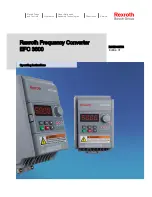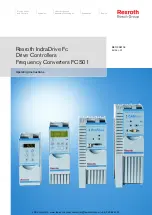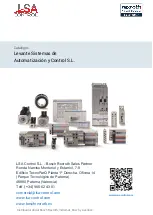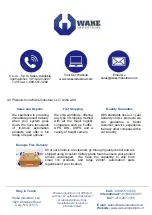
12 General Class Objects (Drive)
100
YASKAWA
SIEP C730600 0DB EtherNet/IP Technical Manual
Instance ID
Attribute
Name
Description
Get
Set
Size
Range
Default
Sets or verifies
F7-19 [EtherNet/IP
Torque Scale Factor]
.
1
26
Power Scale (-15 - +15)
Scale of Units for Power Related
Data
Sets or verifies
F7-20 [EtherNet/IP
Power Scaling Factor]
.
○
○
Byte
-15 - +15
0
1
27
Voltage Scale (-15 - +15)
Scale of Units for Voltage Related
Data
Sets or verifies
F7-21 [EtherNet/IP
Voltage Scale Factor]
.
○
○
Byte
-15 - +15
0
1
28
Time Scale (-15 - +15)
Scale of Units for Time Related
Data
Sets or verifies
F7-22 [EtherNet/IP
Time Scaling]
.
○
○
Byte
-15 - +15
0
1
29
NetRef (Status)
Speed reference is from network
0: Speed reference is not from
network
1: Speed reference is from network
○
-
Byte
-
0
◆
DLR Object 71 (Class 0x47)
Device Level Ring (DLR) is a layer 2 protocol allowing for redundancy in EtherNet/IP based ring topology
networks. DLR allows devices to be placed in a ring to reduce the need for switch hardware and cabling and allow
for the detection and recovery of faults in the ring. This option is a beacon-based ring node implementation.
To set up a DLR network, configure a supervisor on the network prior to connecting and powering on all devices
in the ring. Establishing a ring without an active supervisor may cause a loss of communication to devices on the
ring.
The supervisor precedence must be configured when setting up the supervisor. Typically, the default beacon rate is
400 ms to allow for faster fault detection and recovery period and should be fast enough for devices to recover on
the ring without losing an I/O connection. The precedence value for the supervisor is used when more than one
supervisor is present. When two supervisors are on the network, the supervisor with the higher MAC address will
become the supervisor and the other will become a backup supervisor.
Yaskawa recommends that all devices in the ring be DLR capable. Add non-DLR devices to the ring through a
DLR-capable device, such as a 3-port ETAP.
Ensure that non-DLR devices placed in the ring meet the following requirements:
•
Disable MAC address learning
•
Do not use multicast filtering
•
Preserve VLAN tags.
Make sure that all switches in the ring are DLR-aware. Switches in the ring that are not DLR-aware may cause
undesired behavior due to MAC address learning of the supervisor beacon packets being received on two different
switch ports.
Be sure to set the RPI only as fast as needed to limit the network traffic. This product supports RPIs down to 10
ms. However, if a slower level of control is acceptable, a slower RPI setting will reduce network traffic.
Yaskawa also recommends setting up and configuring all devices prior to completing the ring by leaving one cable
disconnected. Make the last connection after configuring the nodes and supervisor.
Note:
DLR is supported in option software versions PRG: 0341 and later.
■
Services Supported
Service Code No. (hex)
Service Name
01
Get Attribute All
10
Set Attribute Single
■
Attributes Supported
Instance ID
Attribute
Name
Description
Get
Set
Size
Range
Default
0
1
Object Software Revision
Revision number of the DLR
Object
○
-
Word
-
3
1
1
Network Topology
Current network topology mode
○
-
Byte
0, 1
0
















































